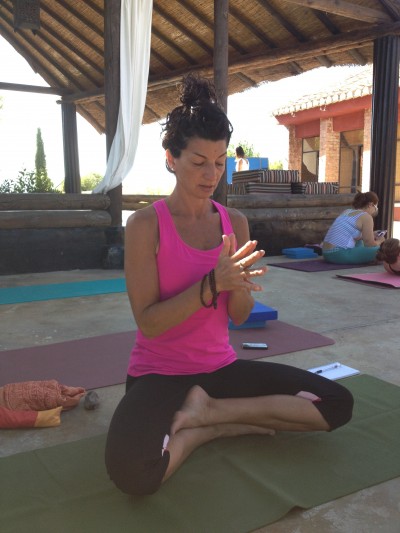
We’re up to Chapter 15 in my daily blogging tour of my book, Stretched: Build Your Yoga Business, Grow Your Teaching Techniques.” Today’s chapter review is about how to build connection with your students. This might seem like an easy task but I’ve found that it’s something that takes time to develop. I’ll start out by saying that this skill varies among teachers and there are many different ways to build connection. The most important way to build connection with your students is for you to relax and be yourself. As soon as we start to stress out, get worried about what others are thinking of us and pretend to be like someone else (perhaps a teacher we admire), we start to build barriers between us and the people we’re teaching. Being real is the best way to build connection.
Having said there, there are other techniques too. This chapter is a bit shorter than the others but it’s got tips to build connection as well as things you want to avoid as they build barriers between you and your students. One of the most surefire ways to disconnect from your students is to speak from memory instead of giving cues that are meaningful. This can be really important in a class of beginners because there will be so much variation between students and also little knowledge around the alignment for each pose. In classes like these, it’s important as a teacher to relax, let go of any preconceived notion about what you “should” be saying and say what is most helpful based on what is happening in the room.
One of the best ways to build connection is to assist students. There is a lot to discuss around assisting itself but if we start out with a general acceptance of the technique as helpful and respectful it its application, we can then then look at it as a way to build connection with students. Assisting is essentially a way to “personalize” the practice to one student, taking into account the special way their body moves. It communicates care, knowledge (if done well) and a desire to facilitate someone’s experience. I am always amazed at how many times students will thank me for assisting. People generally seem to really appreciate it.
I will also add a tip that’s not in the book but one that I’ve found can create wonderful moments of connection between you and your class. Use humor! If something comes up during class where you make a mistake, forget to teach the same pose on both sides, or something comes to mind that you want to share, share it! Laughing is a great way to relax, enjoy, appreciate and keep it real. When we try to be serious and heavy, it creates that same feeling in our students and the whole tone of the class is different. Using humor is also a way to speak from the heart and take a risk; something that builds connection as well.
Next Up: How to Bring Themes of Classic Yoga Philosophy Into Your Teaching.
